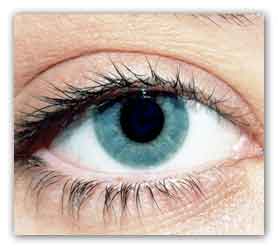|
Adjusting the frequency of eye screenings for people
with type 1 diabetes based on their risk of severe
eye problems would result in fewer eye exams at
lower cost and quicker diagnosis and treatment of
advanced retinopathy, which can otherwise lead to
vision loss.

The findings, published April 19 in the New England
Journal of Medicine, are the latest from an ongoing
study funded for more than 30 years by the National
Institutes of Health.
To develop the new screening suggestions,
researchers analyzed about 24,000 retinal exams
obtained over three decades from about 1,400
participants in the Diabetes Control and
Complications Trial and its follow-up, the
Epidemiology of Diabetes Interventions and
Complications study (DCCT/EDIC).
The DCCT/EDIC scientists found that people with type
1 diabetes should get eye exams to detect diabetic
retinopathy based on their risk, rather than on the
automatic, annual schedule that is currently
recommended.
Diabetic retinopathy is the leading cause of
blindness among working-age adults.
“The results could save money and time while getting
better health outcomes – a win all around,” said Dr.
Catherine Cowie, who oversees DCCT/EDIC at the NIH’s
National Institute of Diabetes and Digestive and
Kidney Diseases, the study’s primary funder.
“The findings from this landmark type 1 diabetes
study will inform a precision medicine approach,
where treatment is tailored to the individual.”
Several major medical groups currently recommend
routine yearly eye exams, starting after three to
five years of diabetes duration, for people with
type 1 diabetes, a condition where the body does not
make insulin.
Diabetic retinopathy occurs when diabetes damages
the light-sensitive tissue in the back of the eye.
DCCT/EDIC researchers suggest a new, more efficient
screening strategy based on the presence and
severity of retinopathy.
For people with type 1 diabetes and a current
average blood glucose level of 6 percent, the
researchers recommend the following eye exam
schedule:
-
With no retinopathy, every four years.
-
With mild retinopathy, every three years.
-
With moderate retinopathy, every six months.
-
With severe retinopathy, every three months.
Researchers also recommended people with higher
current average blood glucose levels (for example,
8-10 percent, versus 6 percent) have eye exams more
often, as they are at higher risk to develop eye
disease.
Overall, researchers found the new, individualized
schedule would result in earlier detection of
advanced retinopathy that requires treatment to save
vision compared with annual exams, while at the same
time reducing the frequency of eye exams.
Over
20 years, the new schedule would result in eight
exams on average, a greater than 50 percent
reduction in eye examinations compared with annual
exams.
The
reduction in exam frequency could lower screening
costs by about $1 billion over 20 years.
“This
new evidence-based screening schedule is based on
taking photographs of the back of the eye, rather
than physical examination with an ophthalmoscope.
Retinal photography is a commonly used and widely
available method to detect eye disease and is
thought to be more accurate than only the physical
exam in detecting diabetic eye disease,” said Dr.
David M. Nathan, the DCCT/EDIC study chair and the
paper’s first author.
“Further studies are needed to learn if the newly
proposed screening strategy applies to type 2
diabetes.” Nathan directs the Diabetes Center at
Massachusetts General Hospital, Boston.
“The
next step is for the findings to be discussed and
potentially incorporated into medical guidelines for
care of people with type 1 diabetes,” Cowie said.
See
also
Doctors will detect diabetic retinopathy before
vision fails (2014-09-04)
Link...
For
more information
New England Journal of Medicine
Frequency of Evidence-Based Screening for
Retinopathy in Type 1 Diabetes
Link...
U.S.
National Institute of Diabetes and Digestive and
Kidney Diseases
Link...
MDN |